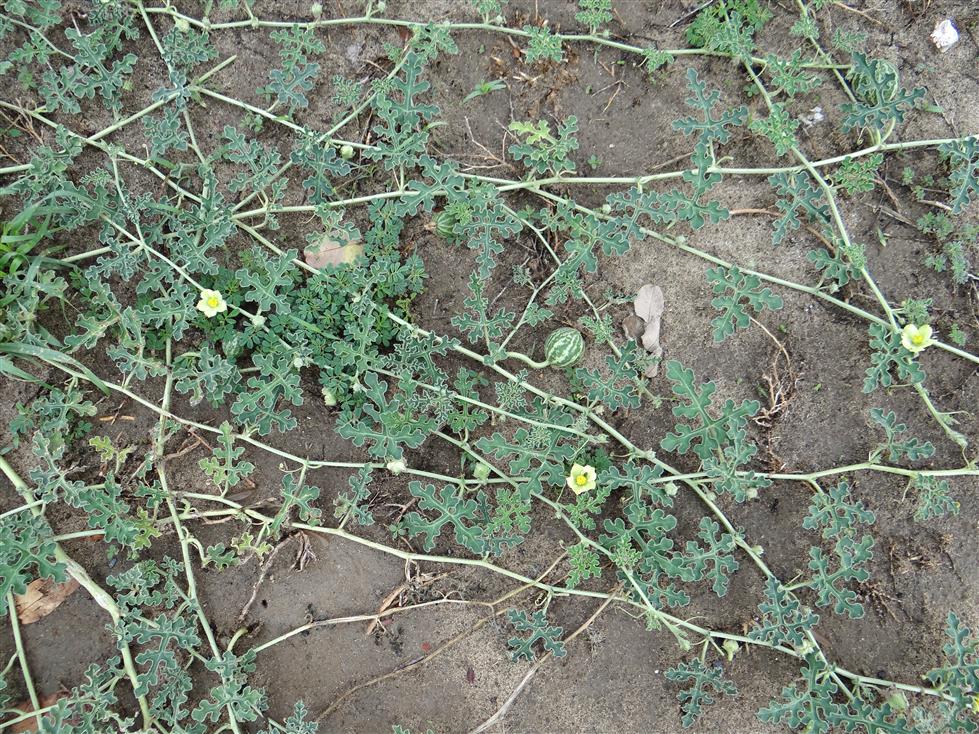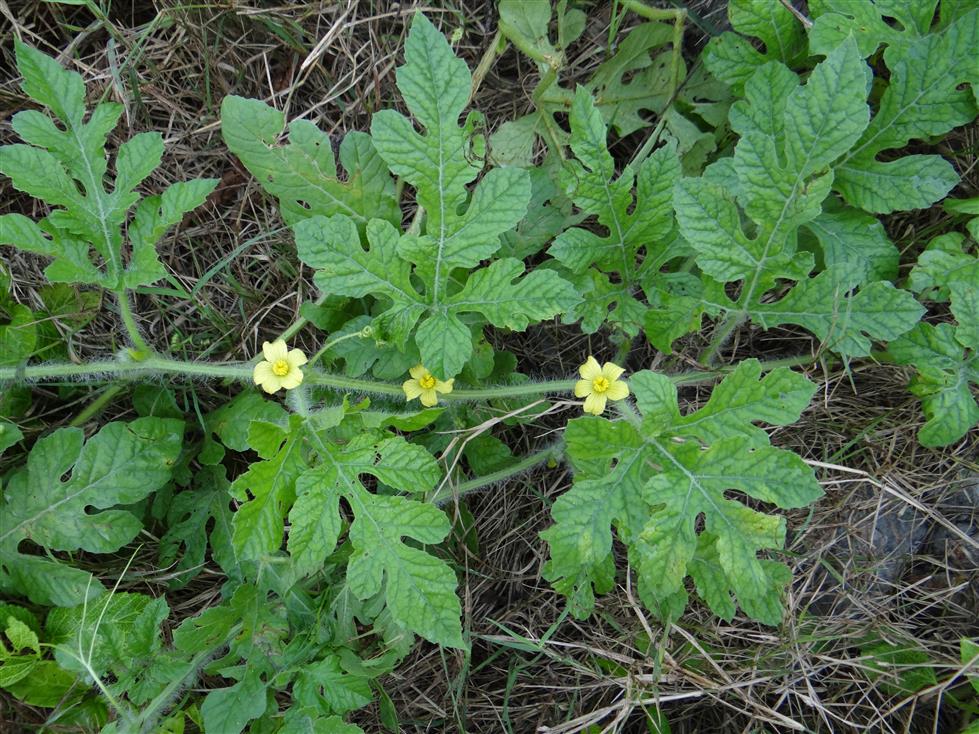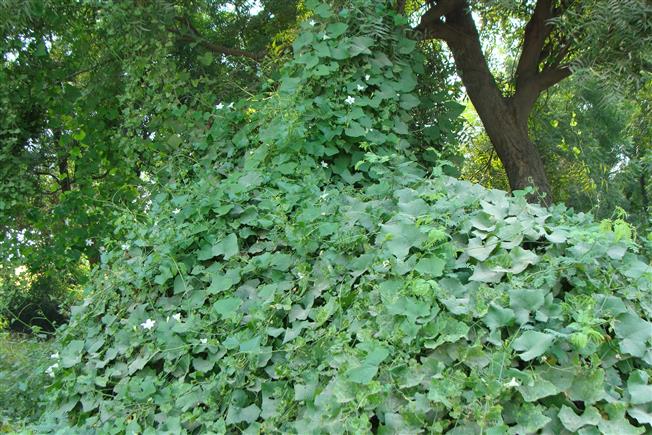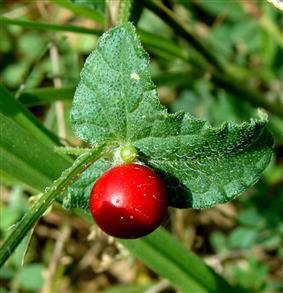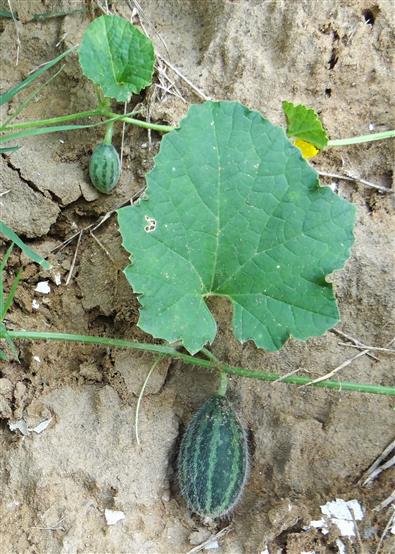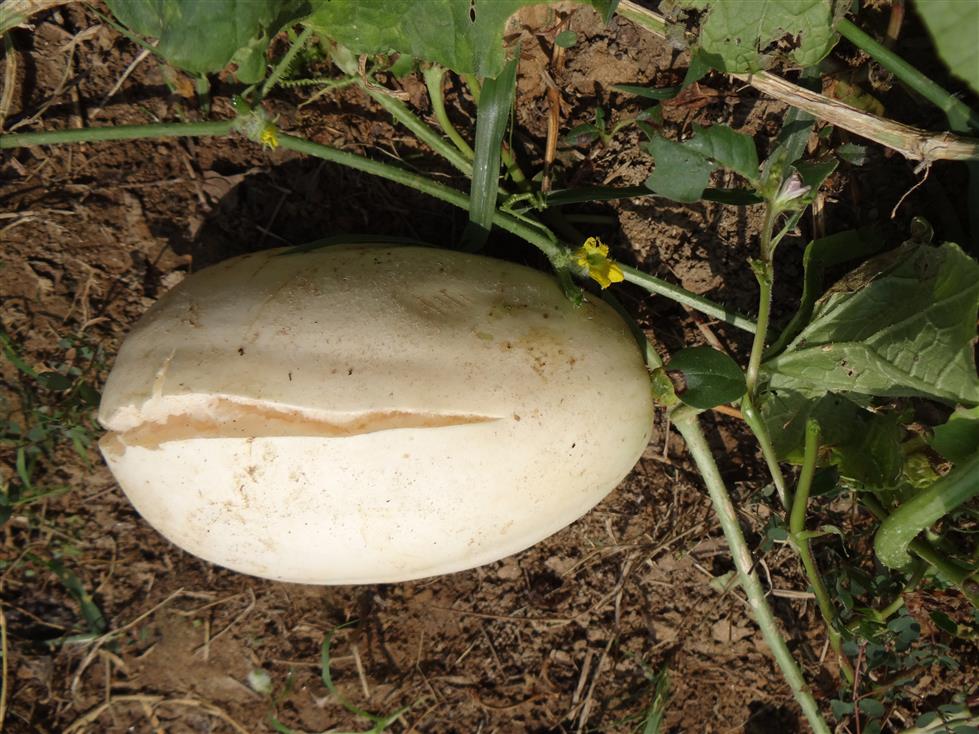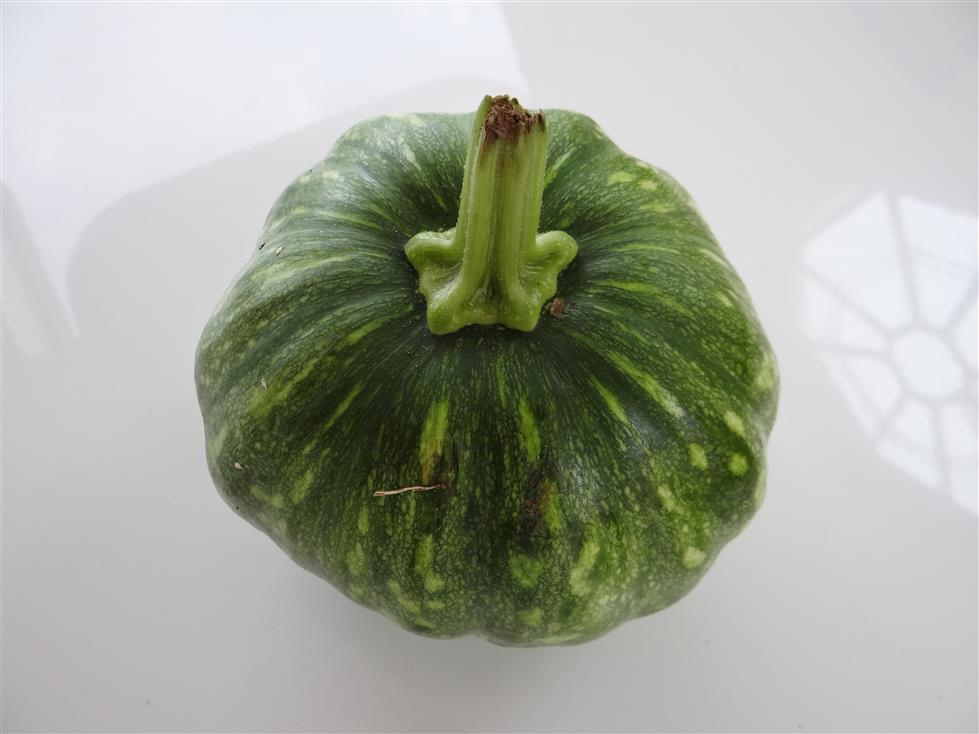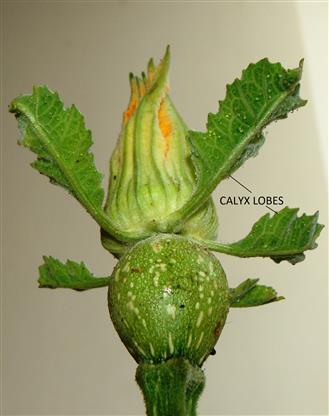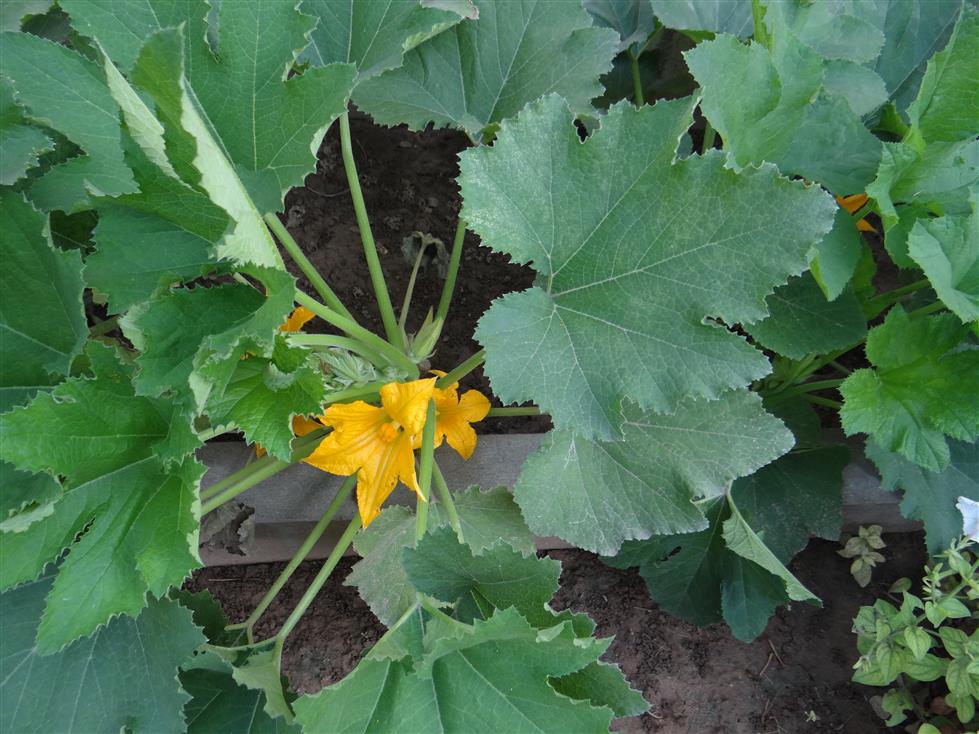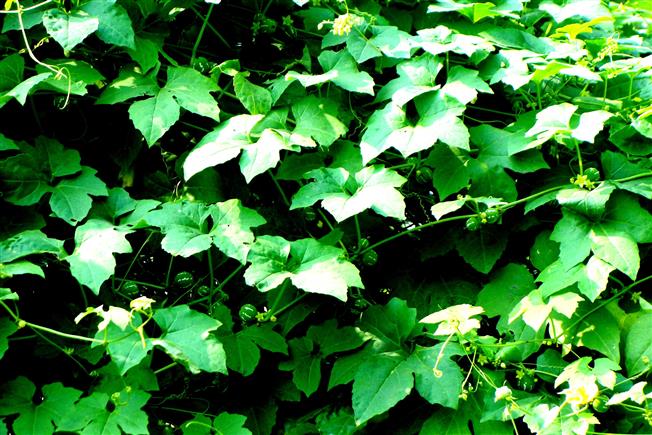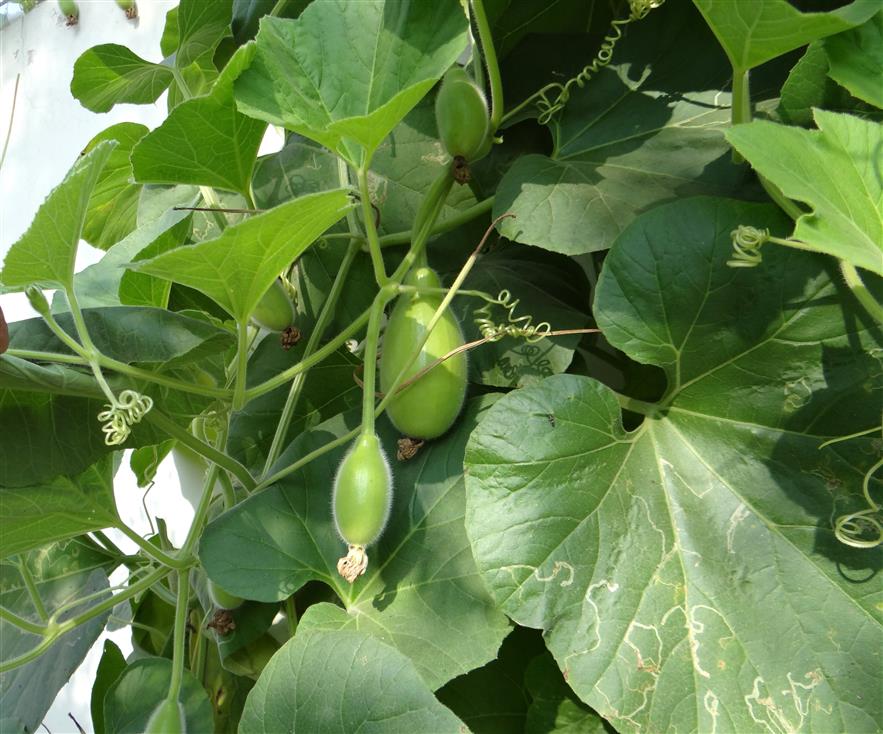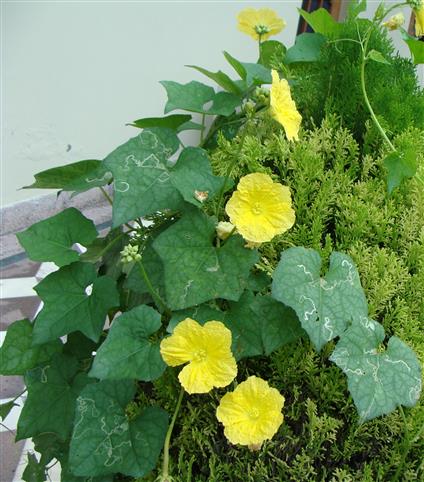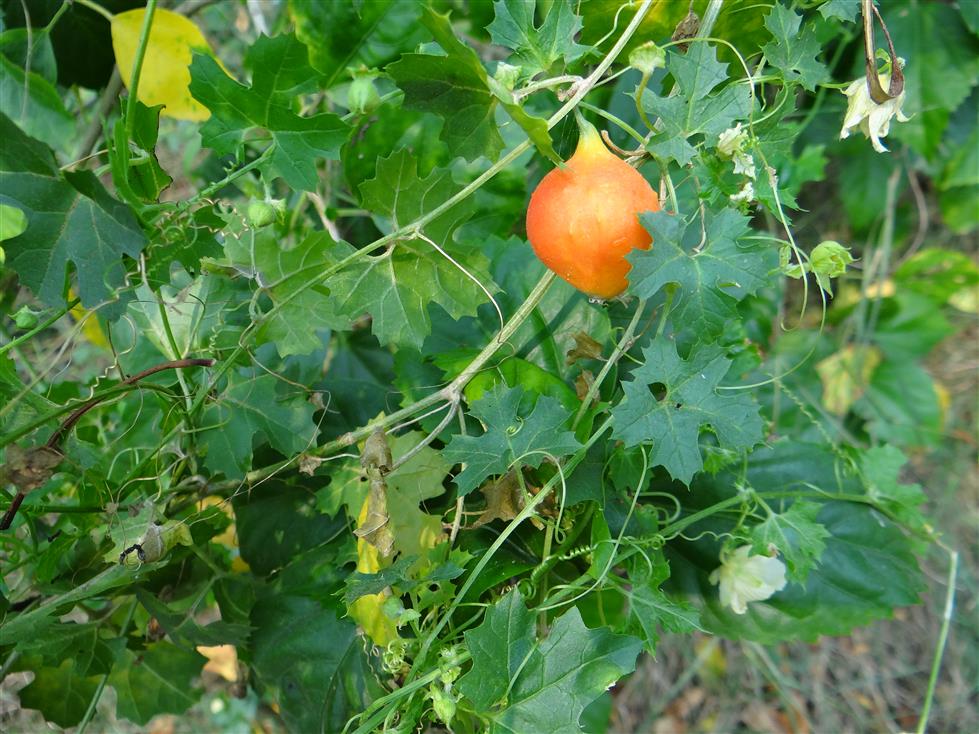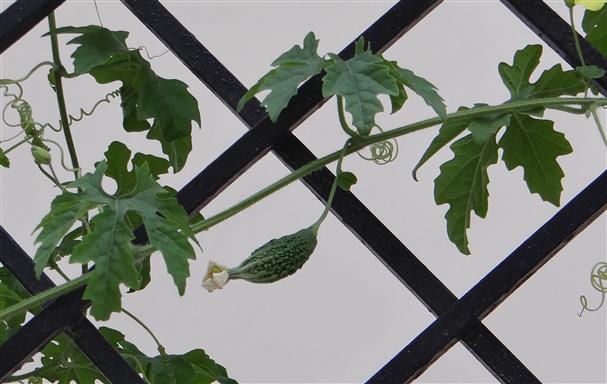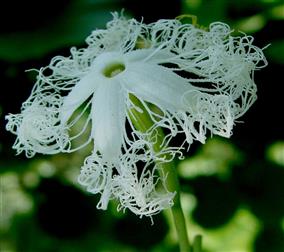CUCURBITACEAE
Annuals or perennials; herbs or undershrubs, weak-stemmed prostrate, trailing or climbing, mostly with simple or branched tendrils; plants with plenty of juice sap in leaves and stems. Leaves exstipulate, petiolate, petiole usually hollow, alternate; lamina usually simple, broad, entire or deeply or shallowly palmately, pedately or pinnately divided, usually palmately veined, reticulate; leaves rarely compound. large and showy. Flowers unisexual (plants then dioecious or monoecious), rarely bisexual, actinomorphic, female flowers epigynous, often yellow or white. Male Flowers: Produced in very large numbers; rotate or campanulate. Sepals 5, fused into rotate, campanulate, saucer- shaped or tubular calyx, lobes pointed and usually imbricate or valvate, petaloid. Petals mostly 5, free or united into rotate, salver- shaped or campanulate corolla with 5 lobes, lobes imbricate or valvate, lobes entire, sometimes fimbriate. Stamens basically 5, of which 4 mostly connate in pairs, thus giving false impression of only 3 stamens, sometimes 2 or 1 due to cohesions, filaments separate or variously united into a column; anthers separate or coherent into a head or column; anther thecae straight, curved, flexuous or conduplicate; anthers bithecous when all stamens free; 1 bithecous (2-celled) and 2 4-thecous(4-celled) when stamens 3. Pistillodes sometimes present. Female Flowers: Fewer than male flowers. Sepals 5, united, calyx- tube adnate to ovary and often produced beyond it. Petals 5, as in male flowers, free or slightly fused. Rudiments of stamens (staminodes) 0 or 3 or 5 present. Tricarpellary syncarpous; ovary inferior, unilocular with 3 parietal placentas, but often the placentas intrude deep into the locules of the ovary making the latter falsely trilocular, more rarely the number of loculi may be 1-10; placentation parietal but apparently axile, but the ovules are not borne on the centre, because the placentae after fusing at the centre curve back, fork into 2 on reaching the ovary wall and bear ovules; style short; stigmas 3 which are often forked. Fruit small to very large, soft fleshy berry termed Pepo, generally indehiscent; very rarely dehiscent fruits. Seeds numerous, flattened.
126 genera and 989 species
